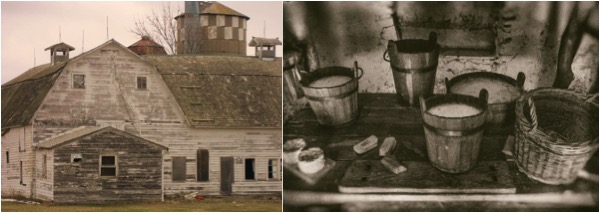Over the past 10,000 years, populations living far apart in Europe, Africa, South Asia, and the Middle East separately acquired a key genetic change: the ability to digest the milk sugar lactose as adults. Researchers thought people who had that ability and lived in dairy farming cultures got a nutritional boost and had more children, thus spreading the genetic changes.
But in recent years, unexpected findings—such as data from Mongolia, where people devour milk products but 95% of adults are genetically lactose intolerant—have challenged that story. Now, a study combines large archaeological data sets on dairy farming with ancient DNA and finds that across Europe, people consumed dairy for millennia before lactase persistence into adulthood was widespread. The researchers suggest illness and famine may have turned lactose intolerance from uncomfortable to deadly, driving periods of intense selection for the digestive trait.
The study “changes our long-term understanding of the relationship between milk use and lactase persistence,” says Jessica Hendy, an archaeologist at the University of York who was not involved in the work.
In the new study, archaeologists compiled evidence of milk from nearly 7000 pieces of ancient pottery, taken from 554 European sites representing the past 9000 years. They tracked the rise and fall of dairy farming across Europe by analyzing the fats preserved in the pottery. With ancient DNA specialists, they then compared this with signs of lactase persistence in 1293 published human genomes from the same regions and period.
Fluctuating dairy use over time didn’t match up with changes in lactase persistence. Instead, the researchers found that what they considered signals of famine and sickness best matched the jumps in lactase persistence in ancient DNA, they report today in Nature. (They used archaeological records to identify periods of shrinking populations—perhaps famines—as well as times of greater population density—possibly times of faster disease spread.)
Lactose intolerance in dairying cultures might be dangerous for people who were sick or starving, suggests co-author Mark Thomas, a human evolutionary geneticist at University College London. A lactose intolerant person consuming milk normally suffers flatulence and diarrhea, with no more severe effects than embarrassment and discomfort, Thomas says: “But if you get diarrhea when you’re severely malnourished, then you have serious problems. One of the biggest causes of death in the world is fluid loss in severely malnourished people.”
The findings support the idea that dairy farming alone wasn’t the key force behind the spread of lactase persistence, the researchers say: The selection pressure likely only grew strong when combined with sickness and starvation.
It’s an “exciting avenue” for ongoing research, Hendy says. But she cautions it’s difficult to estimate ancient population fluctuations and understand what led to them.
The research complements previous results, such as the puzzlingly late arrival of widespread lactase persistence in Central Europe, says Christina Warinner, a molecular archaeologist at Harvard University. But she says the new study brings the heft of several large data sets to the question. The story of dairy farming has been “full of surprises,” Warinner says. “It’s helping us to really appreciate better the complexities of the past.”
Science : July 27 2022 BY CATHLEEN O’GRADY

